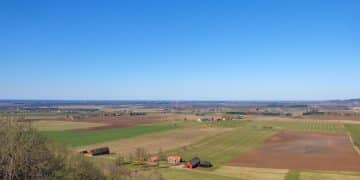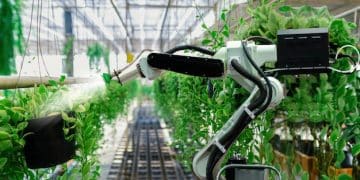US AgTech Investment Trends: Where Venture Capital is Flowing in 2025
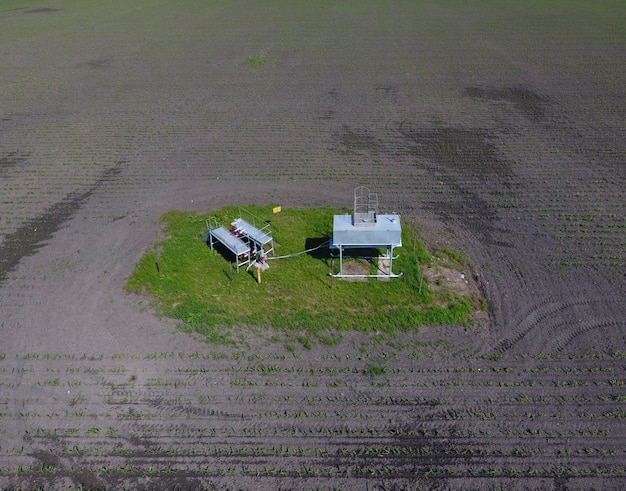
US AgTech investment trends in early 2025 reveal a shifting landscape, with venture capital increasingly focused on sustainable solutions, precision agriculture, and innovative technologies that address climate change and enhance food security.
The agricultural technology (AgTech) sector in the United States is rapidly evolving, driven by the need for sustainable and efficient farming practices. Understanding the US AgTech Investment Trends: Where is Venture Capital Flowing in Early 2025? is crucial for investors, entrepreneurs, and stakeholders alike.
Understanding the US AgTech Investment Landscape
The AgTech sector is becoming a focal point for venture capital due to growing populations, climate change, and the need for more sustainable farming practices. This section provides an overview of the current investment trends.
AgTech encompasses a wide range of technologies aimed at improving agricultural productivity, efficiency, and sustainability. From precision farming to biotechnology, innovation is reshaping the way food is produced and distributed.
Key Drivers of AgTech Investment
Several factors are driving the increased interest in AgTech investments. These include:
- Growing global population and rising food demand
- Increasing awareness of sustainable farming practices
- Advancements in technology, such as AI, IoT, and biotechnology
- Government initiatives and policies supporting agricultural innovation
Areas of Focus for Venture Capital
Venture capital firms are particularly interested in AgTech startups that offer innovative solutions to pressing agricultural challenges. Key areas of focus include:
- Precision agriculture and farm management software
- Biotechnology and crop innovation
- Alternative protein sources and vertical farming
- Supply chain optimization and food traceability
Overall, the US AgTech investment landscape is dynamic and promising. Venture capital is flowing into startups that are addressing critical issues and driving the future of agriculture.
Precision Agriculture: A Magnet for Investment
Precision agriculture is revolutionizing farming by using data-driven insights to optimize crop yields, reduce waste, and minimize environmental impact. This section explores why it’s attracting significant investment.
Precision agriculture involves using technologies such as GPS, sensors, drones, and data analytics to monitor and manage crops with greater accuracy. This leads to more efficient use of resources and better overall farm management.
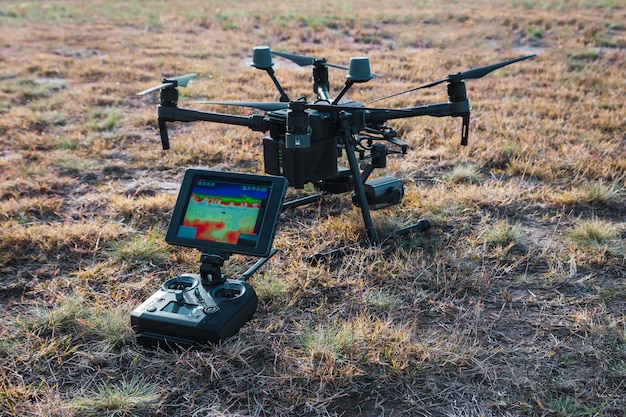
Benefits of Precision Agriculture
The benefits of precision agriculture are compelling for both farmers and investors:
- Increased crop yields and reduced input costs
- Improved resource management, including water and fertilizers
- Enhanced environmental sustainability
- Better decision-making through data-driven insights
Companies Leading the Way
Several startups are making waves in the precision agriculture sector:
- FarmWise: Develops robotic weeding solutions for vegetable farms.
- Taranis: Offers AI-powered crop monitoring and diagnostics.
- Prospera Technologies: Provides insights through computer vision and machine learning.
In conclusion, precision agriculture is a critical area of AgTech investment, offering significant potential for both financial returns and positive environmental impact. Venture capital is flowing into companies that are pioneering these technologies and helping farmers adopt more sustainable practices.
Biotechnology and Crop Innovation: Transforming Agriculture
Biotechnology is playing a crucial role in developing crops that are more resilient, nutritious, and productive. This section examines the investment trends in this transformative field.
Biotechnology in agriculture involves using genetic engineering, gene editing, and other advanced techniques to improve crop traits. This can lead to crops that are resistant to pests, tolerant to drought, and higher in nutritional value.
Key Areas of Innovation
Several areas within biotechnology are attracting significant investment:
- Gene editing technologies like CRISPR
- Development of disease-resistant crops
- Enhancement of crop nutritional content
- Sustainable biopesticides and biofertilizers
Notable Biotech Companies
Companies at the forefront of agricultural biotechnology include:
- Pairwise: Focuses on gene editing to create new varieties of fruits and vegetables.
- Inari Agriculture: Develops high-performing crops optimized for local conditions.
- Benson Hill: Uses data analytics and plant breeding to improve crop performance.
Biotechnology and crop innovation are essential for addressing global food security and sustainability challenges. Investors are recognizing the potential of these technologies to transform agriculture and are providing the capital needed for further development and deployment.
Alternative Protein Sources and Vertical Farming: Disrupting the Food Industry
As concerns about traditional agriculture’s environmental impact grow, alternative protein sources and vertical farming are emerging as promising solutions. This section explores the venture capital trends in these innovative areas.
Alternative protein sources, such as plant-based meats and cultivated proteins, are gaining popularity as consumers seek more sustainable and ethical food choices. Vertical farming, which involves growing crops in stacked layers indoors, offers a way to produce food in urban areas with minimal resource use.
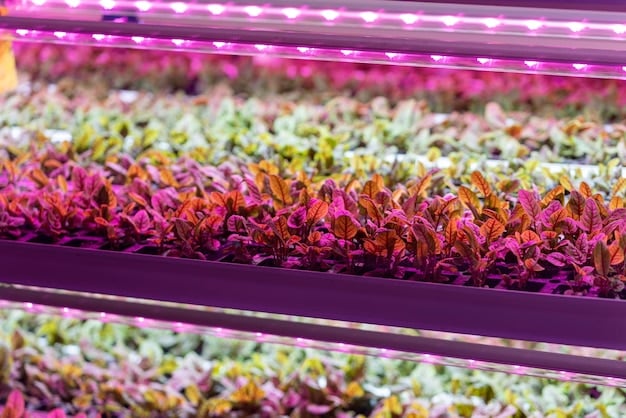
Investment Drivers
Several factors are driving investment in alternative protein and vertical farming:
- Increasing consumer demand for sustainable food options
- Concerns about the environmental impact of traditional agriculture
- Technological advancements in plant-based and cultivated proteins
- Growing interest in urban agriculture and local food production
Companies to Watch
Notable companies in this space include:
- Impossible Foods: Produces plant-based meat alternatives.
- Plenty: Operates vertical farms that grow crops indoors.
- Upside Foods: Develops cultivated meat products.
Alternative protein sources and vertical farming represent significant opportunities for investors looking. Venture capital is flowing into startups that are developing innovative technologies and products that can disrupt the food industry and promote sustainability food production.
Supply Chain Optimization and Food Traceability: Enhancing Efficiency and Transparency
Optimizing the agricultural supply chain and ensuring food traceability is crucial for reducing waste, improving safety, and building consumer trust. This section examines the investment trends in these areas.
Supply chain optimization involves using technology to streamline the movement of food from farm to table. Food traceability systems use technologies like blockchain to track products throughout the supply chain, providing transparency and accountability.
Benefits of Optimization and Traceability
The benefits of supply chain optimization and food traceability are substantial:
- Reduced food waste and spoilage
- Improved food safety and quality control
- Enhanced transparency and consumer trust
- Better supply chain efficiency and reduced costs
Companies in the Forefront
Companies leading the way in supply chain optimization and food traceability include:
- Apeel Sciences: Develops plant-based coatings that extend the shelf life of produce.
- IBM Food Trust: Uses blockchain technology to track food products.
- Tive: Provides real-time visibility into the location and condition of shipments.
Supply chain optimization and food traceability are essential for creating a more efficient, sustainable, and transparent food system. Investors are recognizing the potential of these technologies to improve the food industry and are providing capital to support their development and adoption.
Challenges and Opportunities in AgTech Investing
While AgTech investment offers significant potential, it also comes with challenges. This section discusses some of the key obstacles and opportunities in this evolving sector.
AgTech startups often face challenges such as gaining farmer adoption, navigating regulatory hurdles, and competing with established agricultural companies. However, the opportunities for innovation and disruption are vast.
Key Challenges
Some of the primary challenges in AgTech investing include:
- Farmer adoption of new technologies
- Regulatory compliance and approvals
- Competition from established agricultural companies
- Long development cycles for biotech innovations
Emerging Opportunities
Despite the challenges, several opportunities are emerging in the AgTech sector:
- Developing sustainable and climate-resilient farming practices
- Creating innovative solutions for food waste reduction
- Improving access to nutritious food in underserved communities
- Leveraging AI and data analytics to optimize agricultural operations
AgTech investing presents both challenges and opportunities. Investors who understand the agricultural landscape and are willing to take a long-term view can realize significant returns while contributing to a more sustainable and resilient food system.
| Key Area | Brief Description |
|---|---|
| 🌱 Precision Agriculture | Data-driven farming techniques to optimize crop yields and resource use. |
| 🧬 Biotechnology | Using genetic engineering to improve crop resilience and nutrition. |
| 🍔 Alt. Proteins | Plant-based and cultivated meats for sustainable consumption. |
| 📦 Supply Chain | Optimizing food movement from farm to consumer with traceability. |
Frequently Asked Questions
▼
Key areas include precision agriculture, biotechnology, alternative proteins, vertical farming, and supply chain optimization, all aimed at sustainability and efficiency.
▼
Precision agriculture optimizes crop yields, reduces waste, and improves resource management through data-driven insights, making it attractive to investors.
▼
Biotechnology creates crops that are more resilient, nutritious, and productive through genetic engineering and other advanced techniques.
▼
Alternative proteins offer sustainable and ethical food choices, driving investment in plant-based meats and cultivated proteins for environmental benefits.
▼
Challenges include farmer adoption, regulatory hurdles, competition, and long development cycles, but emerging opportunities often outweigh these obstacles.
Conclusion
The US AgTech investment landscape in early 2025 is characterized by a focus on sustainability, efficiency, and innovation. Venture capital is flowing into startups that are addressing pressing agricultural challenges and developing.
